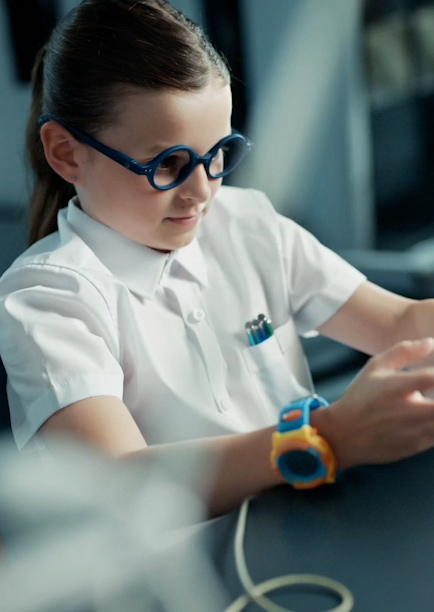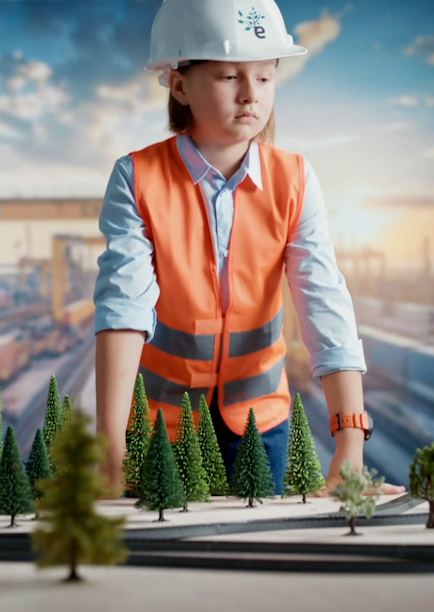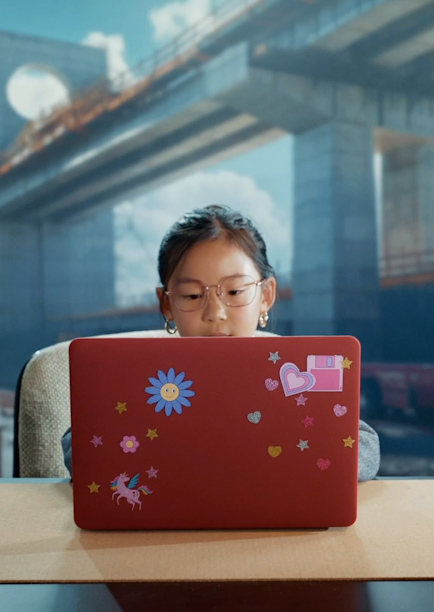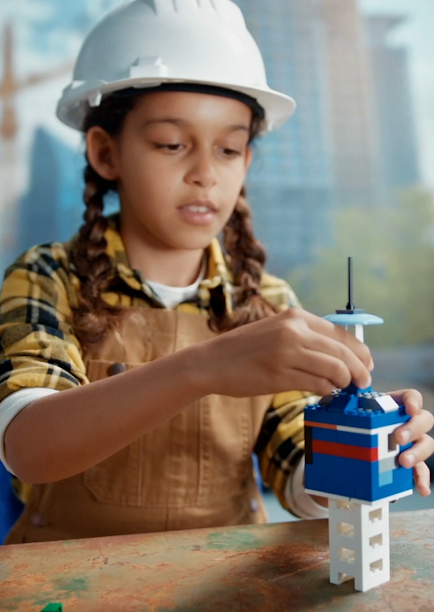Sustainable Urban Development:
Building Resilient Cities through Innovation
Most kids born today will grow up to be city dwellers. Fifty years ago, it was different: only around a third of the world’s population lived in cities. Today over half do. By 2050, that figure will be 68%¹. As Ben Wilson, author of Metropolis, puts it: “We are witnesses to the greatest migration in history, the culmination of a 6,000-year process whereby we will have become an urbanized species by the end of the present century.”
But our cities aren’t just getting more populous and more complex; they are also becoming more vulnerable. “Heatwaves; flooding; rising sea levels; pollution: all of these are challenges that future cities will have to deal with to become resilient and sustainable,” says Marion Milosevic, Solution Experience Director, Cities & Public Services, Dassault Systèmes.
Yet cities too are part of the problem: 75% of all greenhouse gas emissions derive from cities. Therefore, as well as making cities more resilient, urban leaders also need to make those cities themselves more sustainable. And to balance all these demands, they are increasingly turning to technological innovation.
Why Sustainable Urban Planning Matters
Digital Innovation in Sustainable Urban Planning
A transition to smart, future-proof cities is already happening across the world; from Almaty, Kazakhstan, where 97% of the city’s key public services have been made available online, to Perth, Australia, where a smart irrigation project has transformed 106 local parks, resulting in a 27% reduction in water use.².
However, scaling these kinds of innovations globally can be a challenge. Regional authorities may have to contend with siloed organizations, disparate or incomplete datasets, a host of regulatory hurdles, and serious budgetary and resource restrictions. Effective urban planning management in such an environment should begin by addressing these issues.
Barcelona’s use of digital twins in city planning is an example of a city using technology to overcome these barriers. As part of the city authority’s project to refit 10,000 housing units per year for climate resiliency, they are building a digital twin of the city to help model and predict energy usage and reduce waste.
“Digital twins and simulators will help us understand the impacts of any modifications we make in energy, mobility, or any other infrastructure in the city,” says Barbara Pons, Commissioner for the 2030 Agenda, City of Barcelona.
Catch up with Virigil on Disruptors Unleashed!
In this podcast episode, Alex de Sá, Cities & Public Services Industry Consultant at Dassault Systèmes, and 10-year-old Infrastructor Virgile explore how to manage flood risks in cities with virtual twin solutions – from reinforcing flood defenses to creating emergency plans.

Sustainable Smart City Projects Across the World
Virtual modelling is also hugely valuable in planning more resilient cities and mitigating the impacts of climate change already being felt across the world. Consider Cairo, where temperatures regularly reach more than 40°C. “Public spaces are especially vulnerable to the intensifying effects of urban heat islands, where temperatures can reach uncomfortable or even dangerous levels,” says Milosevic.
However, with virtual twins, the prevalence of those heat islands can be modelled. “With that information, we can then deliver targeted solutions to limit the impact of heat and enhance the well-being of residents, in both public and private spaces.” says Milosevic.
As part of a city project that was worked on in partnership with a solution provider, Dassault Systèmes has been developing a virtual twin solution that collates meteorological data and uses it to identify potential heat islands within the city.
“We can then simulate the effectiveness of various mitigation approaches, including revegetation, building insulation, and the optimization of road-surface materials,” says Milosevic. “If we get the right data and perform the right analysis at the right time, we have the power to anticipate the future effects of extreme weather and design solutions that reduce the impact of these risks to create livable, resilient cities,” says Milosevic.
The Importance of People in Future-Proof Cities
For public authorities, putting humans at the heart of this vision is crucial. And here too virtual twins can help. By applying demographic and geographic data to real-world situations, they can analyze the impact of different policy approaches through the creation of ‘what-if’ scenarios to determine which is most effective and where urban resilience can be improved. And by providing a single source of truth from which to work, virtual twins can also cut across organizational siloes and create consensus among decision-makers.
”Any urban project involves lots of coordination between public owners, private developers, urban planners, construction companies, citizens and city councils. Virtual twins bridge the gap between stakeholders and are a powerful way to understand project impacts, ultimately strengthening climate resilience in our cities and communities,” says Milosevic.
The future of our cites hinges on effective collaboration, but this will only happen if the next generation of engineers become fluent in the language of innovation – digital skills. Dassault Systèmes’ partnership with the Southern California Institute of Architecture (SCIArc) aims to directly cultivate these innovation skillsets, giving students hands-on experience with cutting-edge digital solutions like virtual twins. Through initiatives such as the 3DEXPERIENCE EDU programs for Cities & Public Services, academic institutions can equip future urban planners and engineers with the digital capabilities needed to design resilient, sustainable cities. By prioritizing the development of such digital skills, Dassault Systèmes is helping train our future spatial data engineers, GIS experts and BIM specialists who will be crucial to designing future-ready cities.
Given the sheer complexity of cities and the challenges of population growth and environmental stress they face, innovation is needed more than ever. Virtual models offer leaders the opportunity to leverage real-time data and test and iterate policies in the virtual world to minimize risk in the real world, ensuring the allocation of budget and resource to the projects that will make a lasting difference to citizens’ lives.
“With data, we can anticipate the future effects of extreme weather and design solutions that reduce the impact of these risks to create livable, resilient cities.”
Don't miss Amy on Disruptors Unleashed!
In this podcast episode, Thierry Chevrot, 3DEXPERIENCE Edu lead at Dassault Systèmes, and 9-year-old Infrastructor Amy explore how we can bring industry into the classroom and transform students of today into the next generation of sustainable innovators.


FAQ about Sustainable Urban Planning & Environment
Sustainability in urban planning involves designing and developing cities in a way that meets current needs without compromising the ability of future generations to meet their own needs. It focuses on balancing environmental, social, and economic factors by promoting efficient resource use, reducing environmental impact, and fostering resilient, inclusive communities.
The concept of sustainable city development involves creating urban sustainability & environments that balance economic growth, environmental protection, and social well-being. It aims to design cities that are energy-efficient, minimize resource consumption, reduce waste and emissions, and enhance the quality of life for residents while ensuring that these practices are maintained and improved over time.
An example of a clean energy transition is a country shifting from coal-fired power plants to solar, wind, and nuclear energy. This involves replacing old, polluting energy sources with renewable and low-emission alternatives to reduce carbon emissions and promote sustainability.
Sustainable solutions for urban planning include designing energy-efficient buildings, implementing green infrastructure such as parks and green roofs, and developing efficient public transportation systems to reduce reliance on cars. Additionally, promoting mixed-use development and integrating renewable energy sources help to minimize environmental impact, support resilient, livable communities and create jobs as well as social equity. All of these resulting from an extensive collaboration of the entire Cities and Public Services value chain.
Five key factors of sustainable urban development are:
Energy Efficiency: Implementing energy-saving measures in buildings and infrastructure to reduce overall energy consumption and greenhouse gas emissions.
Green Spaces/Infrastructure: Incorporating natural elements like parks, green roofs, and urban forests to improve environmental quality and enhance resilience to climate change.
Sustainable Transportation: Developing efficient public transit systems, promoting walking and cycling, and reducing dependence on private vehicles to minimize pollution and traffic congestion.
Resource Management: Ensuring the efficient use of water, materials, and waste management practices to conserve resources and reduce environmental impact.
Inclusive Design: Creating accessible and equitable urban spaces that meet the diverse needs of all residents, including affordable housing, safe public areas, and community amenities.
Urban design plays a crucial role in shaping the environmental impact of cities. Well-planned urban environments can reduce greenhouse gas emissions, mitigate the effects of climate change, and improve residents’ quality of life. By integrating green infrastructure, optimizing building orientation, and promoting sustainable transportation networks, urban design helps lower energy consumption and pollution.
Virtual twins further enhance this process by allowing city planners to model different scenarios, anticipate environmental impacts such as heat islands or flooding, and implement targeted solutions to build more resilient and sustainable urban spaces.
Urbanization has a significant impact on the environment, both positive and negative. As cities grow, increased construction, energy demand, and transportation often lead to higher greenhouse gas emissions, air and water pollution, and the loss of natural spaces. Urban heat islands, flooding, and rising sea levels are some of the environmental challenges intensified by rapid urban development.
However, with sustainable urban planning and digital technologies like virtual twins, cities can anticipate and mitigate these impacts. By modeling scenarios, optimizing resource use, and integrating green infrastructure, urbanization can become a driver for more resilient, sustainable environments rather than a source of environmental stress.



